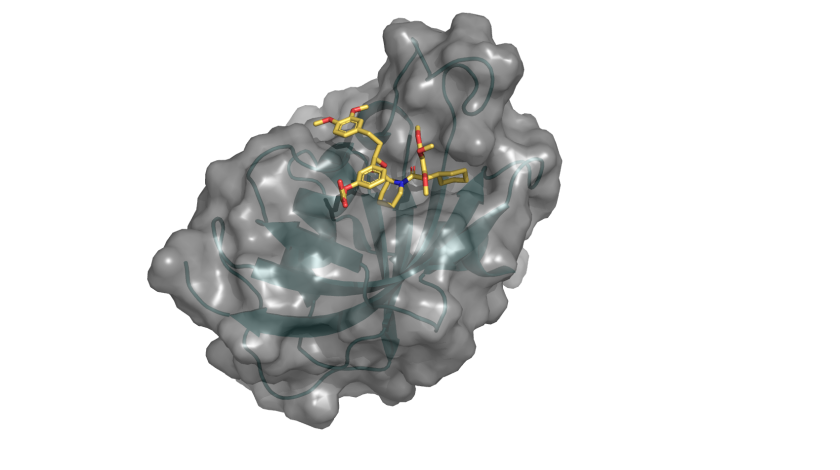4000th protein structure decoded at BESSY II

The 4000th protein structure from HZB BESSY published in PDB shows the G64S variant of FKBP51 in complex with the highly selective ligand SAFit (marked structure). © C. Meyners/TU Darmstadt/HZB
The 4000th structure is the molecule FKBP51, which is linked to stress-induced diseases such as depression, chronic pain and diabetes. The team led by Prof. Felix Hausch, TU Darmstadt, is using the knowledge of the three-dimensional structure to develop new strategies for the design of suitable drugs.
Many diseases are related to malfunctions of proteins in the organism. The three-dimensional architecture of these molecules is often extremely complex, but provides valuable clues as to how the malfunction could be remedied, for example by drugs that bind perfectly into a "pocket" on the target molecule and block the malfunction. The structure of proteins can be deciphered with X-ray analyses at the MX beamlines of BESSY II.
The 4000th structure from BESSY II has now been entered in the Protein Data Bank (www.rcsb.org/pdb), which contains all experimentally determined protein structures. The team led by Prof. Felix Hausch from TU Darmstadt had produced protein crystals from the molecule FKBP51 and examined them on the MX beamlines.
This is a protein that plays a special role in major health problems of our time. FKBP51 regulates the signal transduction of steroid hormone receptors, which can be disturbed by stress. This can trigger depression, chronic pain or diseases such as diabetes and obesity. The protein FKBP51 has shown promise as a target for drugs against these diseases. "Protein structure analysis shows us where interesting "pockets" are located in the molecule that could be drug targets," says Dr. Christian Meyners from the TU Darmstadt team.
arö
https://www.helmholtz-berlin.de/pubbin/news_seite?nid=24367;sprache=en
- Copy link
-
Catalysis research with the X-ray microscope at BESSY II
Contrary to what we learned at school, some catalysts do change during the reaction: for example, certain electrocatalysts can change their structure and composition during the reaction when an electric field is applied. The X-ray microscope TXM at BESSY II in Berlin is a unique tool for studying such changes in detail. The results help to develop innovative catalysts for a wide range of applications. One example was recently published in Nature Materials. It involved the synthesis of ammonia from waste nitrates.
-
BESSY II: Magnetic ‘microflowers’ enhance magnetic fields locally
A flower-shaped structure only a few micrometres in size made of a nickel-iron alloy can concentrate and locally enhance magnetic fields. The size of the effect can be controlled by varying the geometry and number of 'petals'. This magnetic metamaterial developed by Dr Anna Palau's group at the Institut de Ciencia de Materials de Barcelona (ICMAB) in collaboration with her partners of the CHIST-ERA MetaMagIC project, has now been studied at BESSY II in collaboration with Dr Sergio Valencia. Such a device can be used to increase the sensitivity of magnetic sensors, to reduce the energy required for creating local magnetic fields, but also, at the PEEM experimental station, to study samples under much higher magnetic fields than currently possible.
-
Largest magnetic anisotropy of a molecule measured at BESSY II
At the Berlin synchrotron radiation source BESSY II, the largest magnetic anisotropy of a single molecule ever measured experimentally has been determined. The larger this anisotropy is, the better a molecule is suited as a molecular nanomagnet. Such nanomagnets have a wide range of potential applications, for example, in energy-efficient data storage. Researchers from the Max Planck Institute for Kohlenforschung (MPI KOFO), the Joint Lab EPR4Energy of the Max Planck Institute for Chemical Energy Conversion (MPI CEC) and the Helmholtz-Zentrum Berlin were involved in the study.
